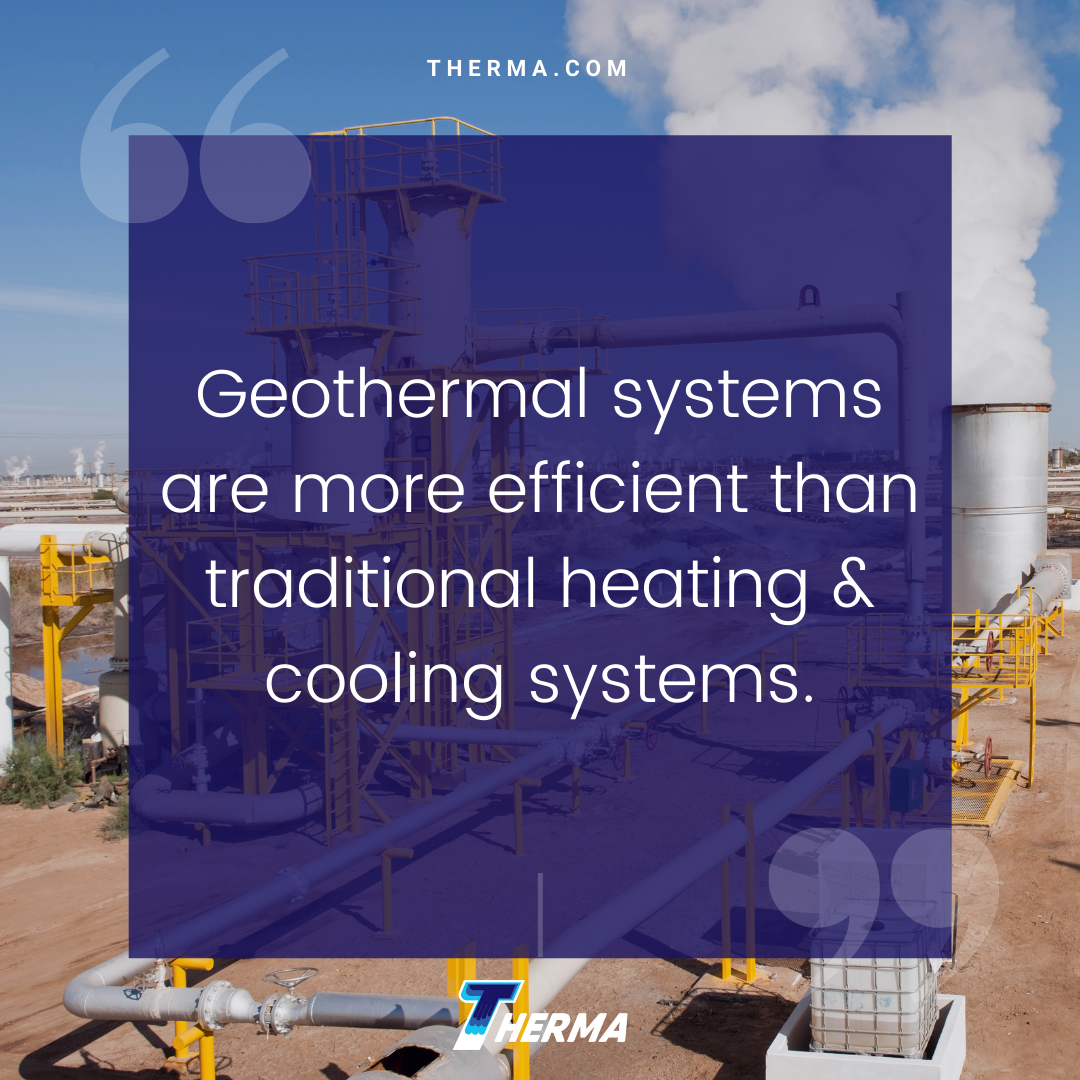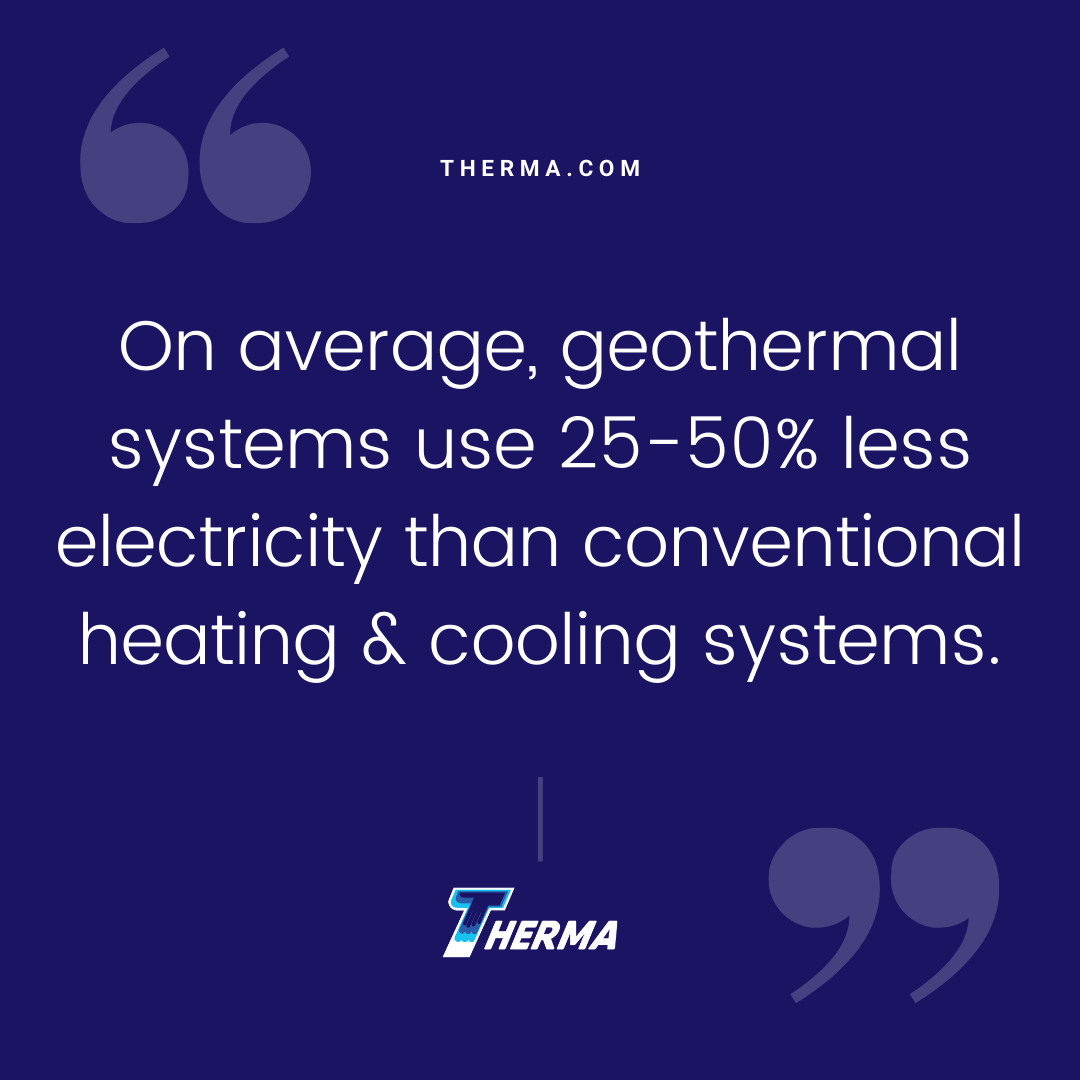While renewable energy holds appeal to homeowners and businesses, it can be daunting to understand how different systems work and what benefits they provide. Geothermal energy has been harnessed by humans for thousands of years, and the technology that utilizes geothermal today is ever-evolving. In this article we’ll take a look at geothermal heating and cooling: what it is, how it works and when it makes the most sense to choose geothermal as a primary HVAC system.
How Does Geothermal Energy Work?
Almost all of the energy sources we use today have been around for thousands of years. Geothermal is no exception, and it derives from the dynamic processes found within the earth. Hot springs – first used by Paleo-Indians, are an early example of how humans have used geothermal energy. The applications have since gone through many commercial iterations from medicinal spas to heating homes.
Today’s geothermal technology allows buildings to use the earth’s latent thermal energy for climate control, and also hot water. Unlike geysers and hot springs, geothermal heating and cooling is not based on high temperatures but rather on the consistent temperature found just below ground level.
At about six to eight feet deep, ground temperature stays within a range of 45 F to 75 F. While that may sound like a wide range, consider the air temperature in the Northeastern US ranges between 26 F to 90 Fahrenheit. By comparison, the earth is more stable in temperature and the seasonal variance works in the favor of HVAC needs. When it’s cold above ground, geothermal heat pumps (GHP) can exchange thermal energy by drawing it out of the earth via a ground loop filled with a liquid medium — either water or an antifreeze solution. The process can be reversed in warmer months, and the system can operate like a heat sink carrying thermal energy out of a facility and exchanging it for the cooler temperature found below ground.

Types of Geothermal Energy Systems
In order for a geothermal system to work effectively, there must be sufficient supply of the exchange medium to provide adequate heating and cooling. The medium typically used is a polyethylene tubing filled with antifreeze. About 500-600 feet of pipe is required per ton of system capacity. So if your facility requires a 3-ton GHP, you’ll need to find a building for 1,500 feet of tubing in the ground.
The configurations can follow a closed loop design with either a buried horizontal or vertical layout. Or the closed loop can be submerged at least eight feet deep in a nearby body of water. The fourth option is an open loop that uses well water as the medium for thermal energy exchange.
Costs and Considerations with Geothermal Energy
Geothermal systems are more efficient than traditional heating and cooling systems. They deliver more energy per unit consumed than conventional heating and cooling methods. On average, geothermal systems use 25-50% less electricity than conventional heating and cooling systems.
While operating costs are lower, the upfront costs of installing a geothermal heating and cooling system are often higher than conventional systems. The payback period or ROI depends on the specific system and local utility costs, but you can usually expect to see a return within two to ten years. There are also special programs to help offset the initial costs of geothermal systems. These are available through federal, state and local government, and utility providers. There are also energy-efficient mortgages that can include the cost of energy-saving improvements within a home loan.
When looking at the costs and returns for a geothermal system, it’s important to consider all of the variables that will determine the best option for your building. The types of soils, amount of land available and geographic location are all considerations for upfront costs along with system size and available financial incentives. For example, an open loop system may incur higher costs for well drilling depending on the size of the home and the tubing capacity requirements to meet system demand.

Benefits of Geothermal Heating and Cooling
The economics and logistics of geothermal heating and cooling are dependent on the variables of your building, site and financial situation. However, there are benefits with this type of system beyond the financial returns. Geothermal systems don’t have outdoor condensers and are quieter than conventional systems. They don’t rely on combustion so they are cleaner and not a source for carbon monoxide poisoning. These systems also provide better humidity control, making indoor air healthier.
If you are curious whether a geothermal system is right for you, your best next step is to contact an HVAC professional like Therma who can help you make the right decision.
Ali Kriscenski was trained in high-performance building design at Boston Architectural College. She has worked with leading architecture and construction firms in NYC and New England and served on the executive team at Forest Stewardship Council International. She was Managing Editor at Inhabitat and has worked pro bono for the Green Building Institute, ISEAL Alliance, and Habitat for Humanity.
Sources
EERE Geothermal Technologies – A History of Geothermal Energy in America
US DOE – Geothermal Heat Pumps







